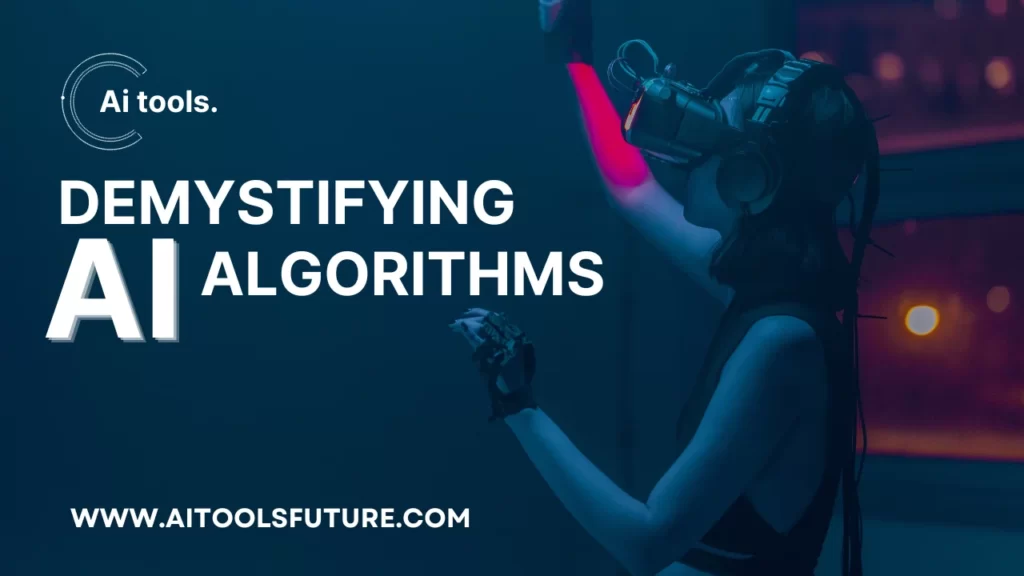Artificial intelligence (AI) is a buzzword that has made big waves in recent years, but for many, it remains a mystery. At its core, AI is driven by complex algorithms that control decision-making processes. In this article, we embark on a journey to demystify AI algorithms by converting jargon into plain English and shedding light on how the algorithms work.
The AI Alphabet Soup: Understand the Basics
Before we dive into the intricacies of AI algorithms, it would be useful to first establish a foundation with some key terms:
AI (Artificial Intelligence)
AI refers to the simulation of human intelligence in machines. This includes tasks such as problem-solving, learning, reasoning, and natural language understanding.
Machine learning (ML)
ML is a subset of AI in which machines learn from data to improve their performance on a given task without being explicitly programmed.
Algorithm
An algorithm is a set of instructions or rules that a computer follows to perform a specific task.
Data
Data is the raw material that AI algorithms use to learn and make decisions. It can be text, images, numbers, or other information.

The brain behind AI: Neural Networks
At the heart of many AI algorithms is a concept inspired by the human brain: neural networks. These networks are made up of layers of interconnected nodes, or “neurons,” each responsible for processing and transmitting information. Neural networks are the powerhouse behind tasks like image recognition, natural language processing, and even gaming.
Think of neural networks as puzzle-solving machines. They analyze data by breaking it down into smaller, digestible pieces and processing each piece in turn or in parallel. This intricate web of interconnected nodes allows AI to recognize patterns, make predictions, and draw conclusions.
Learning from Data: Supervised vs. Unsupervised Learning
AI algorithms learn from data through two primary approaches: supervised and unsupervised learning.
Supervised Learning:
In supervised learning, the algorithm is trained on labeled data that contains the correct answers. It learns to make predictions or classify data based on this labeled information.
Unsupervised Learning
Unsupervised learning, on the other hand, deals with unlabeled data. The algorithm explores the inherent structure of the data, grouping similar data points together or reducing dimensionality without predefined categories.
Making Decisions: Decision Trees and Random Forests
When AI algorithms need to make decisions or categorize data, they often use decision trees and random forests.
Decision Trees
Decision trees are flowchart-like structures that help algorithms make decisions by evaluating different criteria. Each node in the tree represents a decision or test that leads to different outcomes.
Random Forests
Random forests are ensembles of decision trees that combine the strengths of multiple trees to improve accuracy and avoid overfitting. They are like a committee of decision makers, each contributing their perspective.
NLP: The Magic of Natural Language Processing
Natural language processing (NLP) is the branch of AI that deals with human language. AI algorithms in this field enable machines to understand, interpret, and generate human speech. They drive chatbots, language translation apps, and voice assistants.
NLP algorithms are tasked with deciphering the subtleties of language, including grammar, context, mood, and even sarcasm. They break text into tokens, analyze word frequency, and build language models to respond coherently to human input.

The Way Forward: Continuous Learning and Development
AI algorithms are not static entities. They evolve and improve over time through continuous learning. They become more accurate and efficient as they process more data and learn from their mistakes. Researchers and developers are constantly pushing the boundaries of AI and creating algorithms that can handle increasingly complex tasks.
Recommended Reading : AI Tools for Creatives
To Summarise
AI algorithms are the engines of the AI revolution. Although they may seem daunting at first glance, understanding the basics of how they work can demystify the world of artificial intelligence. From neural networks to decision trees to NLP, these algorithms are the building blocks of intelligent machines that will shape our future. So the next time you hear about AI, you’ll have a clearer picture of the magic happening behind the scenes.




